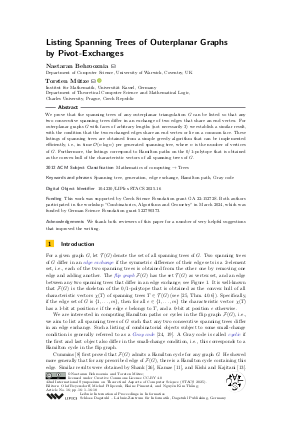LIPIcs.STACS.2025.16.pdf
- Filesize: 2.08 MB
- 18 pages

 Creative Commons Attribution 4.0 International license
Creative Commons Attribution 4.0 International license

We prove that the spanning trees of any outerplanar triangulation G can be listed so that any two consecutive spanning trees differ in an exchange of two edges that share an end vertex. For outerplanar graphs G with faces of arbitrary lengths (not necessarily 3) we establish a similar result, with the condition that the two exchanged edges share an end vertex or lie on a common face. These listings of spanning trees are obtained from a simple greedy algorithm that can be implemented efficiently, i.e., in time {O}(n log n) per generated spanning tree, where n is the number of vertices of G. Furthermore, the listings correspond to Hamilton paths on the 0/1-polytope that is obtained as the convex hull of the characteristic vectors of all spanning trees of G.











Feedback for Dagstuhl Publishing